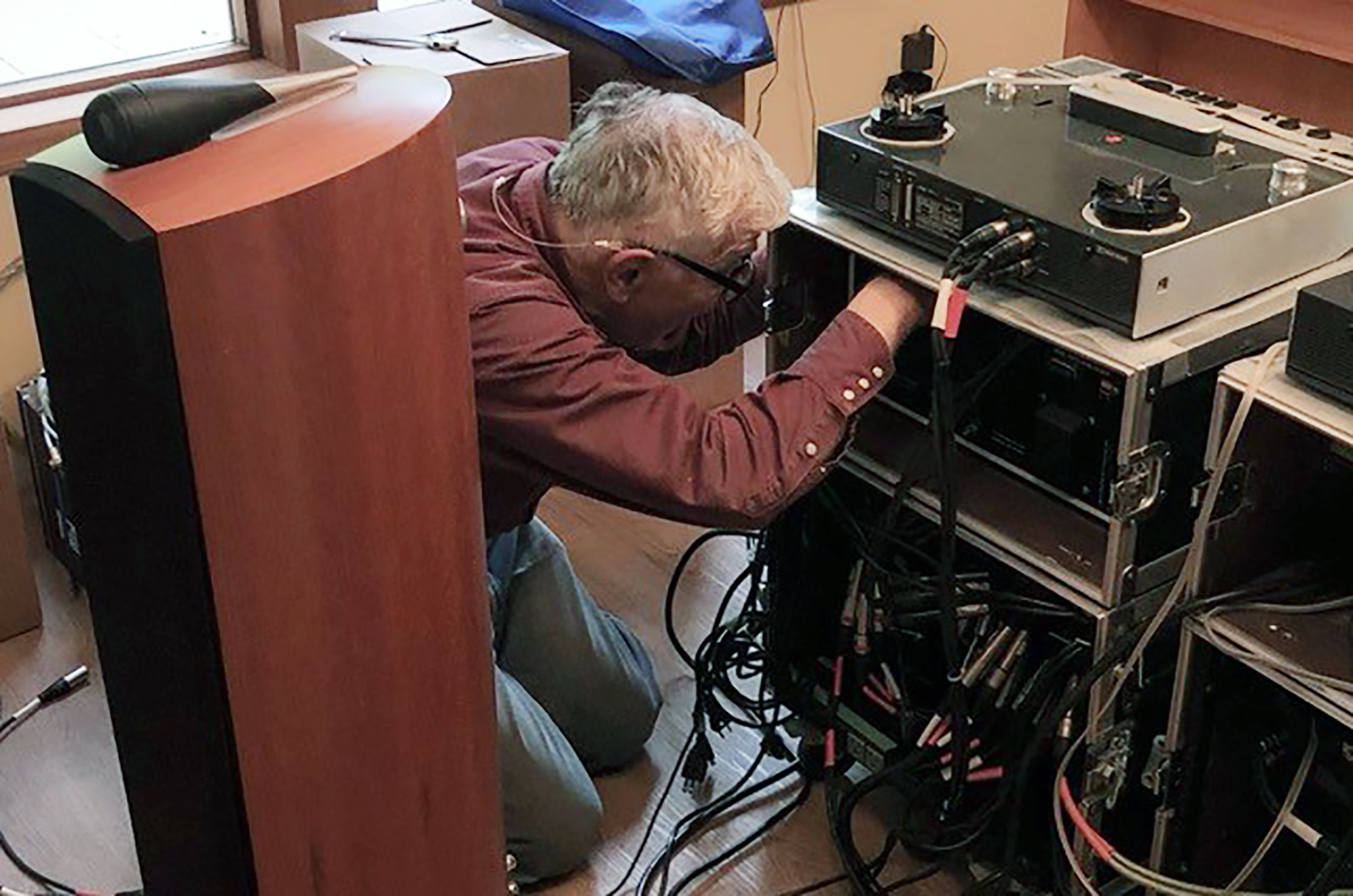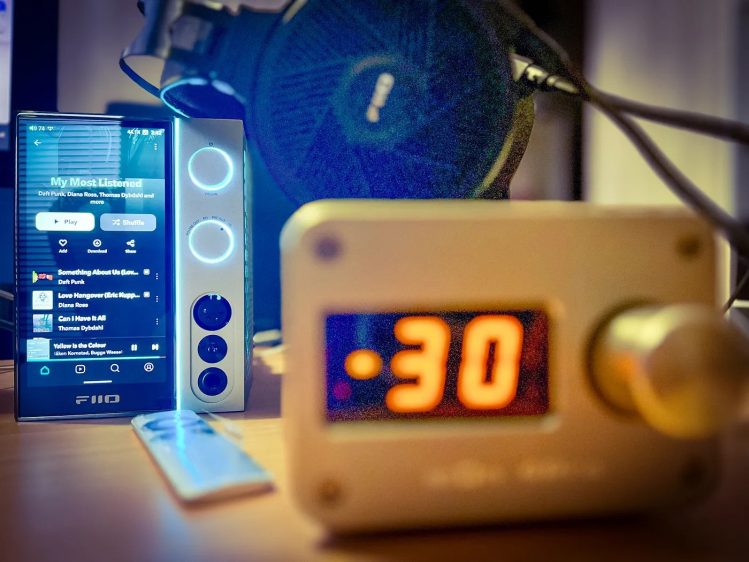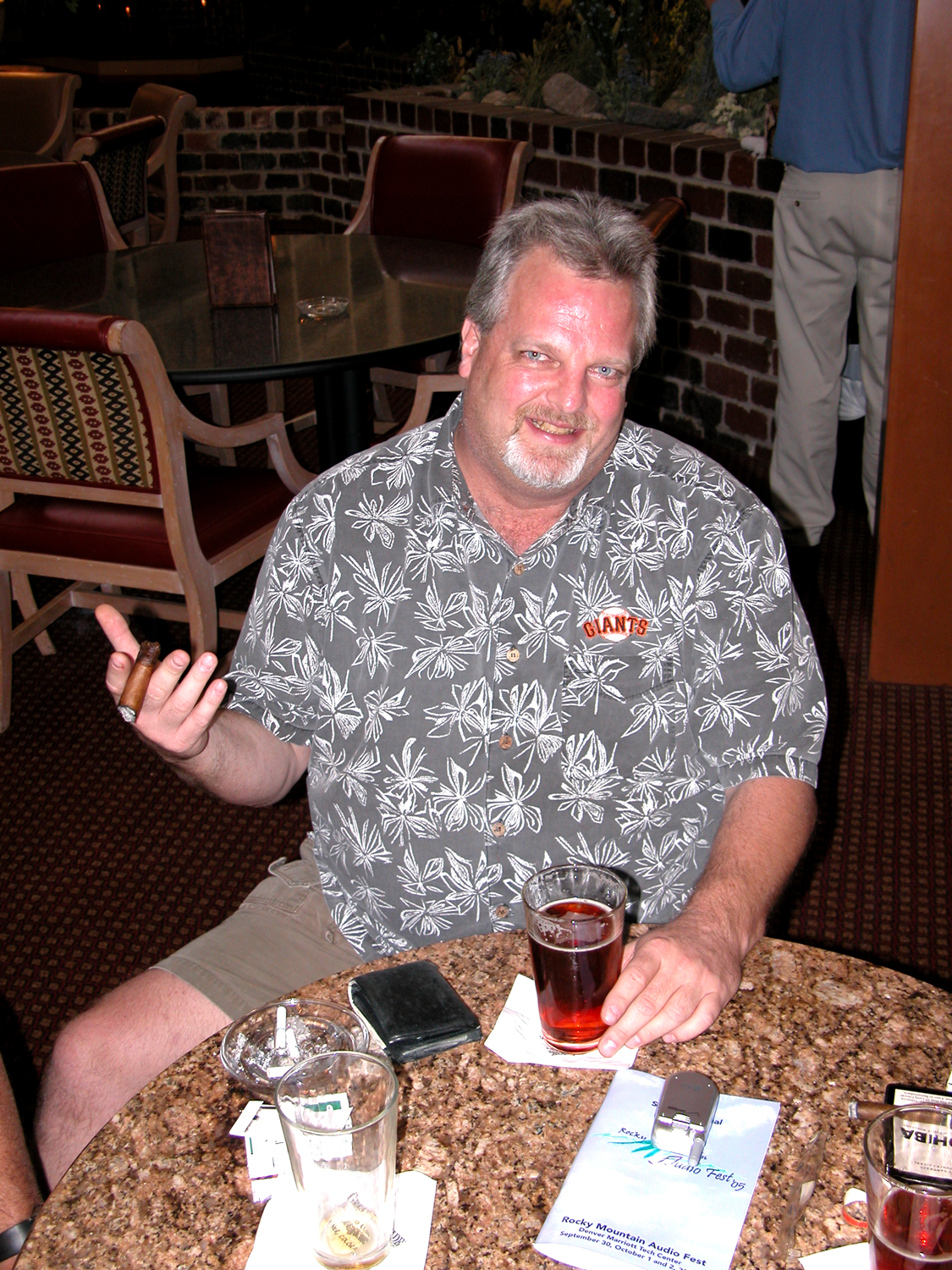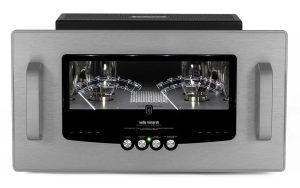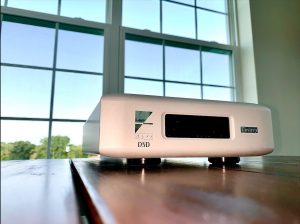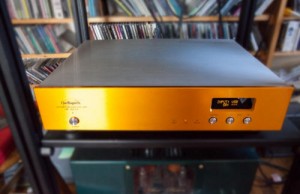This guest article is by Thom Mackris, head honcho at Galibier Design. PF Senior Associate Editor Lynn Olson shared it with me right after Thom published his comments on a very recent three-hour listening session that he had with Lynn. They were doing some listening comparisons with exaSound DACs; the comments below summarize Thom's take on what they heard.
Thom's article is re-published here with his kind permission.
Dr. David W. Robinson, Editor-in-Chief
And now for something completely different … auditioning DACs.
Our neighbor, friend, and Positive Feedback reviewer Lynn Olson brought over two exaSound DACs for this analog die-hard to sample (pun intended).
I'm a turntable designer, and many think of me as an analog-only kind of fellow, but that couldn't be further from the truth.
Make Peace with Digital
First and foremost, I'm a music person. It's borderline cliché, but needs to be stated that some music will never find its way to an open reel tape or vinyl record. There's a wealth of new music out there and it's inviting you to join in the adventure.
Lynn and I love analog reproduction, but we're also open to digital's unique tonal palette.
Shifting from analog to digital for me is like switching guitars (or switching between acoustic and electric). I have my favorites and every neck is different, but five minutes after picking it up, I'm at ease with it.
The Contenders
The DACs in question were an older exaSound e20 Mk III and their new, 8-channel model—the e38. There's a two channel version named the e32. I've been listening to Lynn's and two friends' e20s over the past three years, along with exaSound's recent offerings at Rocky Mountain Audiofests over the past few years.
I've always been impressed with how the exaSound designers express their musical sensibility through their designs. If only more designers "got it" the way exaSound does.
Start Making Sense (with apologies to David Byrne)
The e38 builds on the strengths of the e20, taking it to another level of refinement and insight into the music. I'll spare you the details, as Lynn will be writing a full review. (I'll update this post with a link). Suffice it to say that music makes sense to me through these two devices.
Making sense is at the top of my audio priority list.
Music after all is a language—experienced through both mind and body, and if the contrapuntal rhythms of a hot salsa band don't have you moving, or you've never experienced great singer awakening a wide breath of emotions, then it's very likely that your system isn't delivering the goods.
The Geeky Stuff
We listened to a variety of formats stored on Lynn's laptop (PCM, DSD, etc.) and the differences between the two units was consistent across these formats. I won't go through this recording by recording. The key improvements in the e38 are slightly better dynamic shadings, a bit more sense of both authority and refinement, and a "kinder" treble.
We ran both units with the same Teddy Pardo power supply, power umbilical, power cord, and interconnect.
We preferred both converters when running through my Thöress full-function preamp, although they acquitted themselves nicely when directly driving the NiWatt amplifiers—to the extent any component can.
I have yet to hear a component that does not sound better through an active line stage. Passive attenuators (whether resistive or magnetic)? No thank you! Any perceived transparency they might have (emphasis on "might have") is more than offset by an absence of presence and pace to the music.
I love Afro-Caribbean jazz and Bluegrass/Newgrass and without an active line stage, these dynamic and heavily rhythmic forms don't come through as intended.
On My Soapbox (again, Thom?)
I have a few pet peeves, and one of them is dreadful demo music heard at shows—music that's all too frequently used as a common language among audiophiles. I go ballistic when people think in terms of format (LP, CD, PCM, DSD, etc.) and only then about program material.
Do you choose a book by the color of its cover, or whether it's paperback or hard cover, or do you select it by the author and its content?
Does your system perform in such a way that you're encouraged to explore new music, or do you play the same recordings over and over and over again?
Do you (consciously or subconsciously) avoid playing certain music because "it doesn't sound good" on your system?
I champion systems that treat both poor (and lower resolution) recordings as well as good recordings and formats with equal dignity.
In years gone by, I've lived with systems that limited my musical choices by directing me to a small set of genres based on what the components did well, and more importantly what they did poorly.
I went through three years of barely listening to an orchestral recording because of the limitations of a full range, single driver system.
Never again will I live with a component that limits my musical choices.
Listening
Much of Lynn's library is unknown to me, but a few particular (known) recordings stood out during our session: Simon and Garfunkel's Bookends, and the Broadway Cast album of West Side Story. I'm a big Bernstein fan, along with his protégé, David Amram (Bernstein's first composer in residence at the New York Philharmonic).
The Prologue in West Side Story had me jumping out of my seat during the crescendos (as it should). The dynamic shadings on "America" (Bookends album) were impactful on both, but rendered slightly better on the e38.
Much as I'm not a fan of Joni Mitchell's deteriorating voice (stop smoking, Joni), her recent interpretation of "Both Sides Now" was a new twist on one of her classics.
After satisfying ourselves with Lynn's traveling library on his laptop, I suggested that we check out some YouTube videos (mon dieu!). I wanted to introduce Lynn to a few artists who have recently been brought to my attention.
Up first was Billy Strings and his band, performing "Little Maggie" with Molly Tuttle sitting in at the 2018 Gray Fox Bluegrass festival.
Billy is a technician extraordinaire (Molly is no slouch either), and his blazing technique is always in service of his his creativity. I got a real kick out of Molly's smile as Billy pulled some musical rabbits out of his hat in the jam in the linked video.
We then switched over to a few war horses, including Bonnie Raitt's rendition of Richard Thompson's "Dimming of the Day" and her "Angel From Montgomery."
Bonnie's voice is becoming a bit fragile, but does she know how to sell a song!
Thompson invariably brings me to tears with the 1952 "Vincent Black lightning" (link at the top of this post). If these two performances don't tug at your heart strings, I don't know what to say.
Round and round we went, and of course, Tedeschi & Trucks' version of "Angel From Montgomery," had to be watched. It just had to…
Get the picture?
The exaSounds bring out the best in high resolution formats while treating compressed formats with dignity (YouTube, anyone?)
The Verdict
I can think of no greater compliment for an audio component than it opening new musical doors for me. I'm done with components that limit my musical choices. I've been there (limited), and I won't go back. There's a better place to be.
I'm 2-channel guy, and will soon be plugging an exaSound e32 DAC into our reference system.
Lynn and I went down a rabbit hole of musical discovery—on YouTube, no less! A world of music at the click of a button. How does it get better than that?
Look for an extended review of the e38 from Lynn in Positive Feedback.




